How To Store Clothes: Your Guide to Switching Seasons
THIS POST MAY CONTAIN AFFILIATE LINKS. PLEASE SEE OUR FULL DISCLOSURE POLICY FOR DETAILS.
Learn the best way to store clothes when you’re switching seasons. Save money and keep your clothes safe and clean each year.
When the seasons change, so do our wardrobes! Whether you’re moving from winter to spring or summer to fall, switching your clothes to suit the season can be challenging. Is storing clothes in plastic containers OK, or should I use something else? Is it better to fold or hang clothes? How do I store clothes to prevent damage and mold? You’ll learn all this and more in this helpful guide.
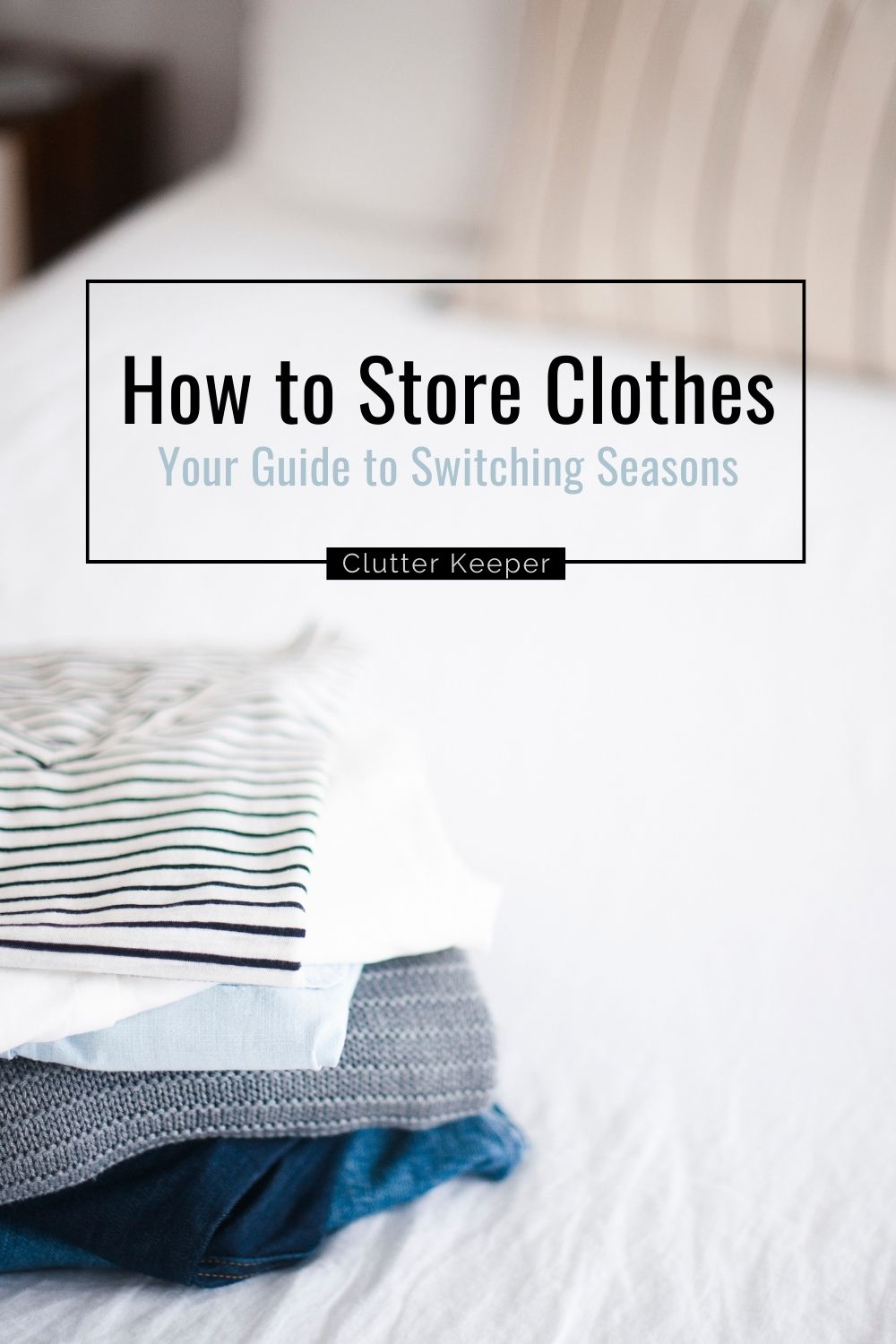
Most of us have too many clothes to keep in our wardrobes year-round.
And even if we have the space to keep them out, it can get overwhelming fast – making it difficult to find what you’re actually looking for.
When summer is in full swing, the last thing you want to do is dig through sweaters and long-sleeved tops to find something suitable for the season.
Instead, storing clothes as you move from one season to the next can be a great way to keep your wardrobe streamlined and your closet and dresser free of clutter.
But storing clothes between seasons isn’t as simple as shoving everything into a cardboard box and tossing it into storage until you need it next. Instead, if you’re looking to preserve the integrity of your clothes, there are a few things you’ll want to keep in mind as you store your clothes for future seasons.
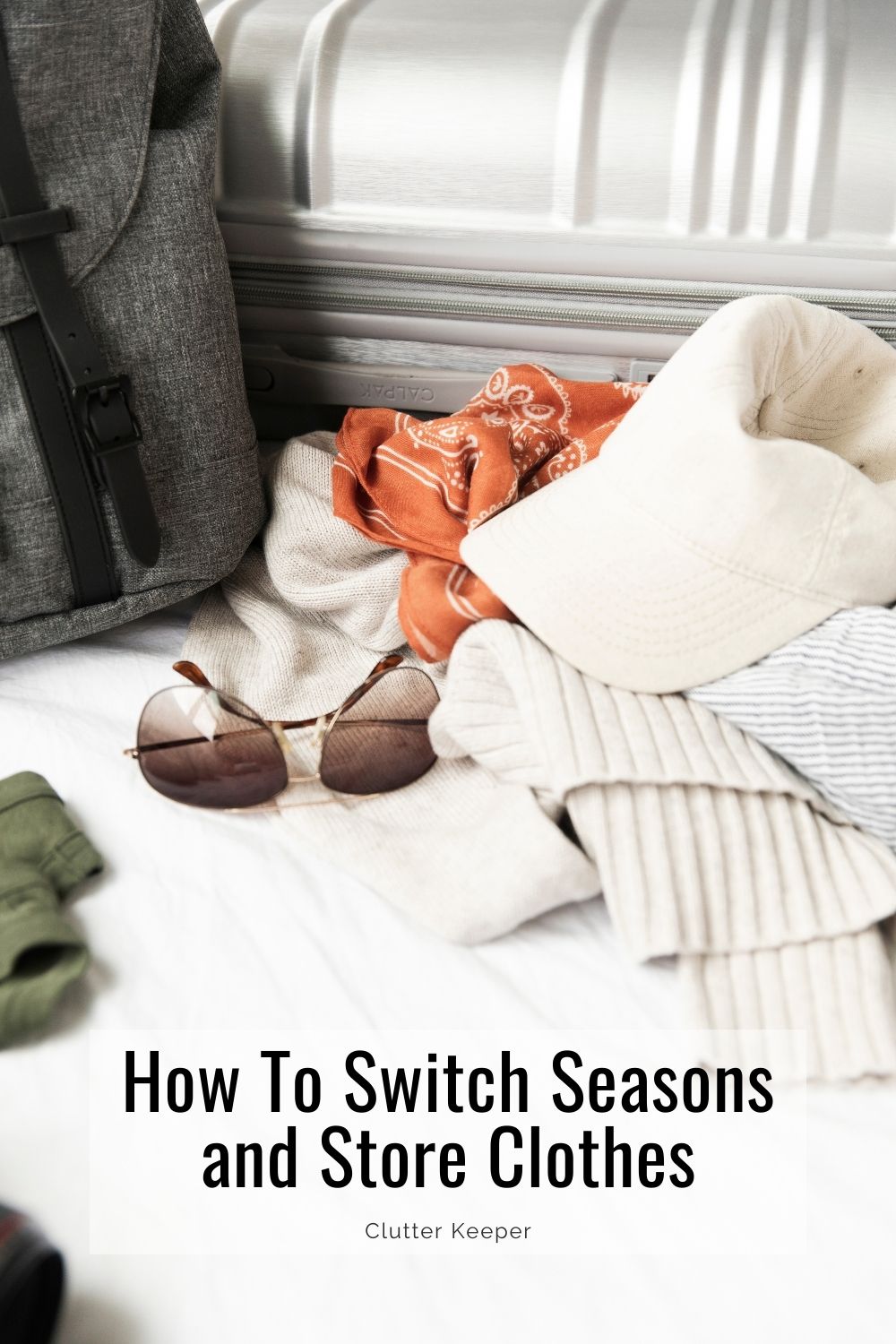
Wondering where to begin? Get our FREE guide, The 30-Minute Organizing Secret, and discover easy ways to overcome the chaos of clutter – even with kids at home!
How To Switch Seasons and Store Clothes: Common Questions
Switching seasons and storing clothes doesn’t have to be a difficult or time-consuming process. It’s something most of us can knock out in a single afternoon – or even just an hour or two of focused effort.
However, it isn’t as simple as pulling everything out of your closet and throwing it into a box. Instead, you’ll want to take care and be planful as you store your clothes between seasons to preserve their quality and stay organized.
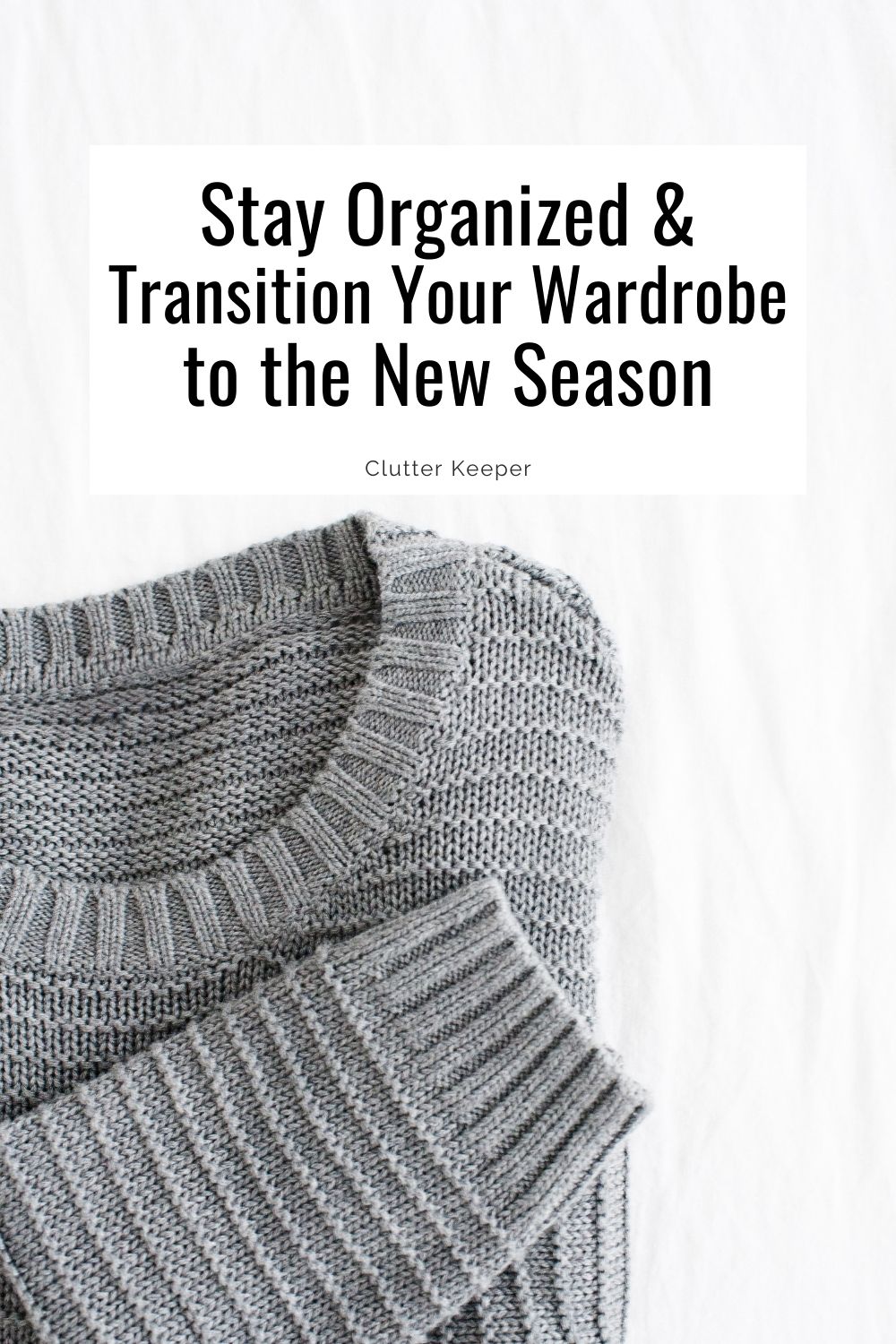
How do I stay organized when transitioning my wardrobe from season to season?
As you move from one season to the next and swap out your clothes, there are a few things you can do to stay organized throughout the process:
- Go into the process with a plan! Otherwise, it’s easy to get overwhelmed and find yourself frustrated. Guides and plans like the Tackle Your Closet Toolkit can take a lot of guesswork out of the process.
- Make sure all storage containers are clearly labeled. This will help you know where to put each item – and make it easier for you to find what you’re looking for when it’s time to get them out of storage. You don’t need to go crazy with fancy labels, either – a simple sticker label or a piece of masking tape and a permanent marker can easily do the job.
- Store like items together. As an example, when storing winter clothes, put sweaters in one box, hats and scarves in another, and coats in a different container – instead of mixing them all up in one chaotic box.
- Don’t store items you no longer need. Swapping out your wardrobe from one season to the next is a great opportunity to trim down your wardrobe. If you come across items that are damaged or things you don’t actually wear anymore, set them aside and get rid of them instead of packing them away.
Is it OK to store clothes in plastic containers?
For most things? Yes, absolutely.
Plastic containers can be a great option for long-term clothes storage between seasons. They’re affordable, they’re durable, they’re waterproof, and they’re stackable. Whether you’re keeping your stored clothes in a spare closet, the basement or attic, or an offsite storage facility, you can rest assured that clothes stored in plastic boxes will be protected from the elements and difficult for moths and other critters to penetrate.
Now, there are some clothes that shouldn’t be kept in plastic containers. Extremely delicate fabrics like lace need to breathe – otherwise, they run the risk of yellowing. Similarly, goods made from leather may develop creases if folded for long periods of time. Instead of storing these items in plastic, wrapping them in acid-free tissue or putting them in breathable garment bags can be a safer choice.
If you’d rather avoid storing clothes in plastic containers, there are other options. Structured fabric storage solutions can be an excellent alternative – as long as you can ensure you can keep them in a place free of moisture.
Additionally, vacuum-sealed storage is another option. While this can be a smart choice when you’re very limited on space, compacting some items can cause damage over time.
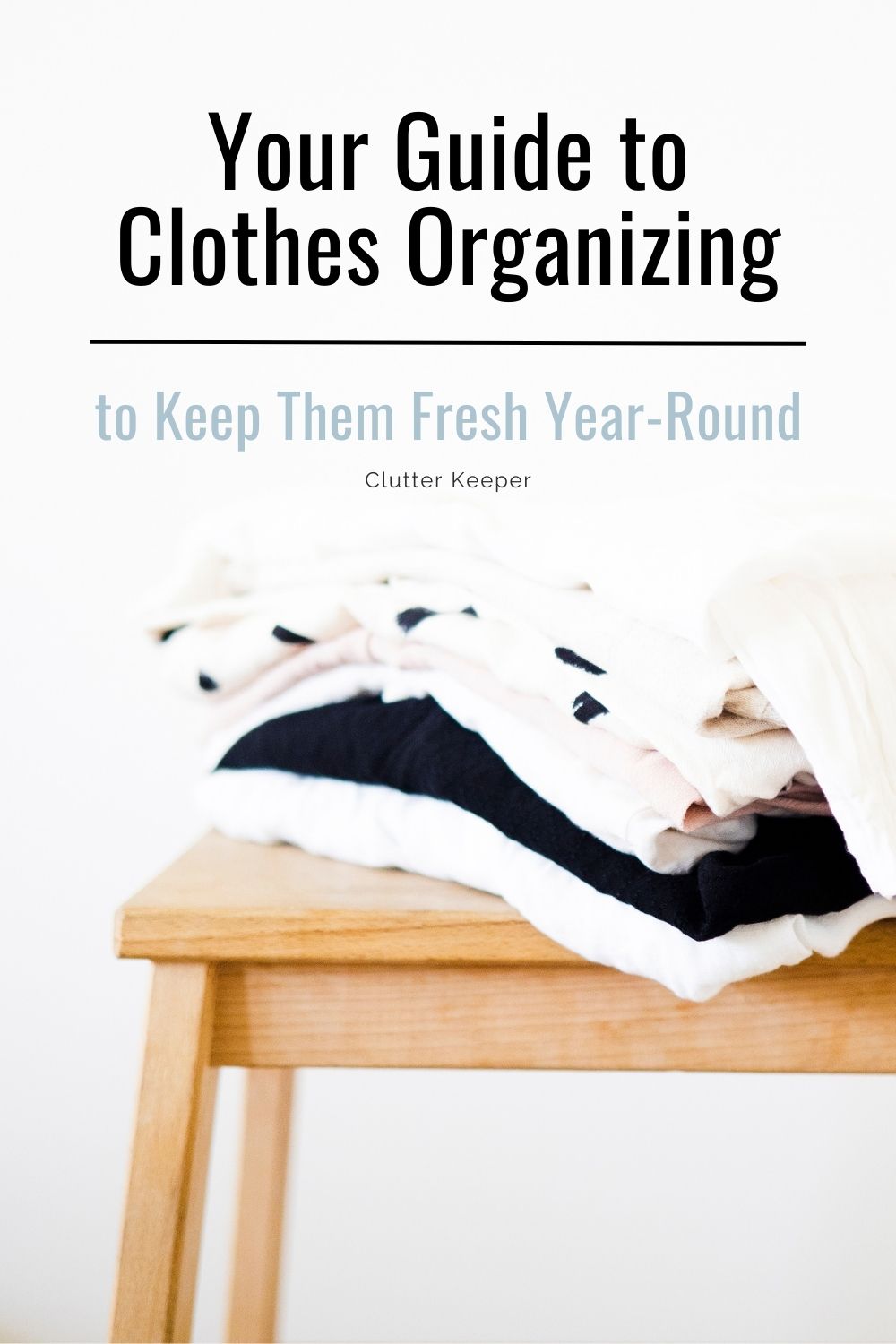
How do I store clothes to prevent mold?
When it comes to mold, the biggest contributor is moisture. You want to make sure your clothes are tightly packed and sealed away in a dry container with no way for water to get in.
Here are a few things you can do to reduce the chances of mold and mildew:
- Make sure your clothes are totally dry before storing them away. It might sound obvious, but a little moisture can go a long way in wreaking havoc on your wardrobe.
- Choose storage containers that can be sealed tightly. A plastic box with a lid that securely snaps on is a great option; a loose bag isn’t as ideal.
- Add a few silica gel packs to your storage container. They’ll draw in any moisture and keep your stuff dry.
Is it better to fold or hang clothes?
When it comes to folding or hanging clothes, there’s no one-size-fits-all answer. Instead, it depends on what your personal storage situation looks like – and what you’re actually trying to store.
If you have substantial closet storage space that’s separate from your day-to-day wardrobe, hanging your clothes between seasons might be a viable option for you! Choose structured hangers (instead of thin wire hangers) to preserve the integrity and structure of your items, and consider breathable garment bags to keep dust at bay.
Some items benefit from being hung up to hold their shape – things like jackets and other more structured items.
However, there are lots of items that definitely should not be hung for long-term storage. Delicate knit items and heavy sweaters can stretch and lose their shape if hung for long periods of time and are best kept when folded and stored away.
And if you don’t have enough closet space to hang up all of your extra clothes? The vast majority of items can be folded and stored away for future use with no negative impact.
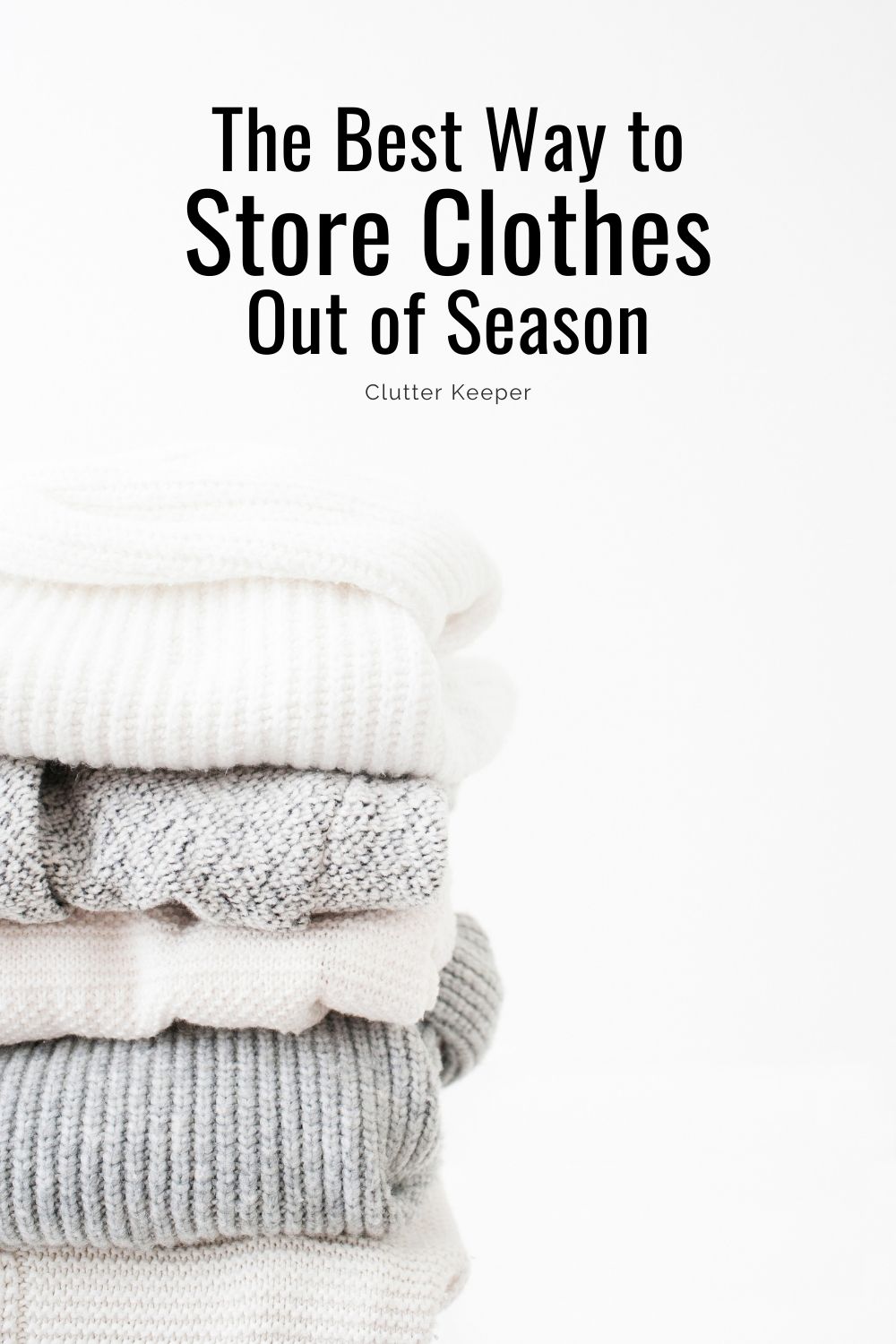
Struggling to get motivated? Sign up to get our FREE guide, The 30-Minute Organizing Secret, and discover easy ways to overcome the chaos of clutter – even with kids at home!
More Clothes Organization tips
If you enjoyed learning about how to organize your clothes and closets, then here are some more tips that you’ll enjoy next:
